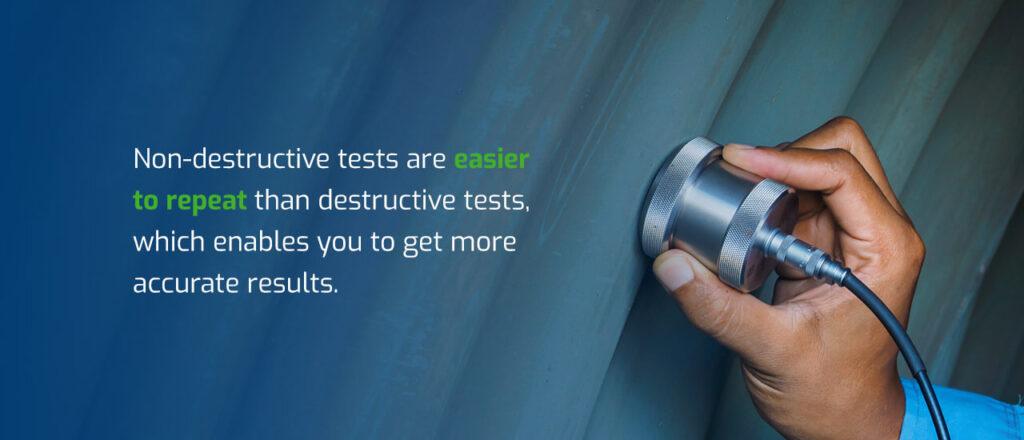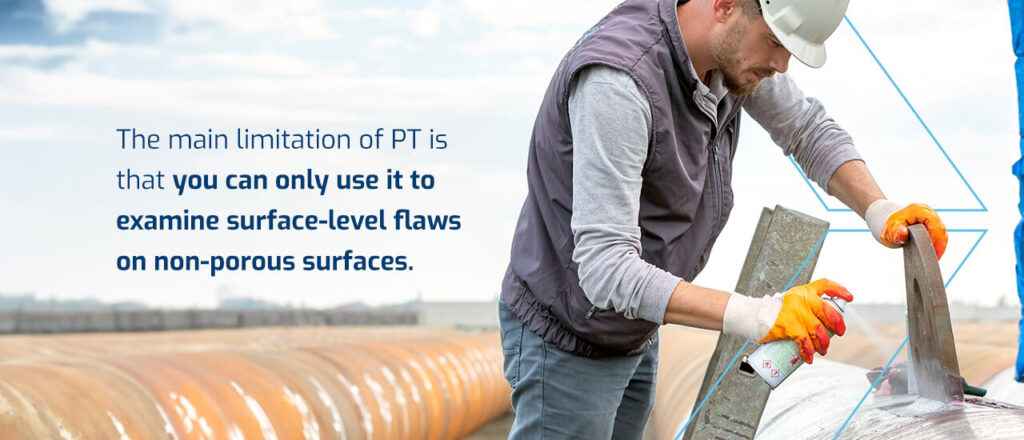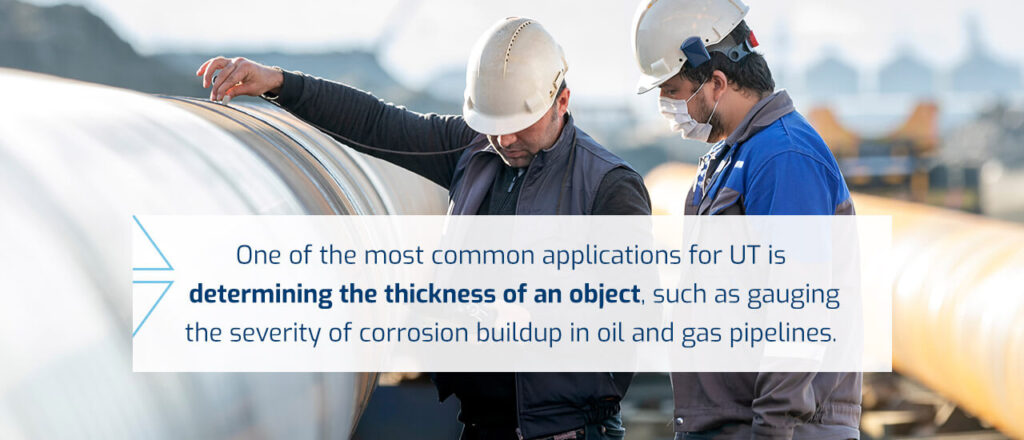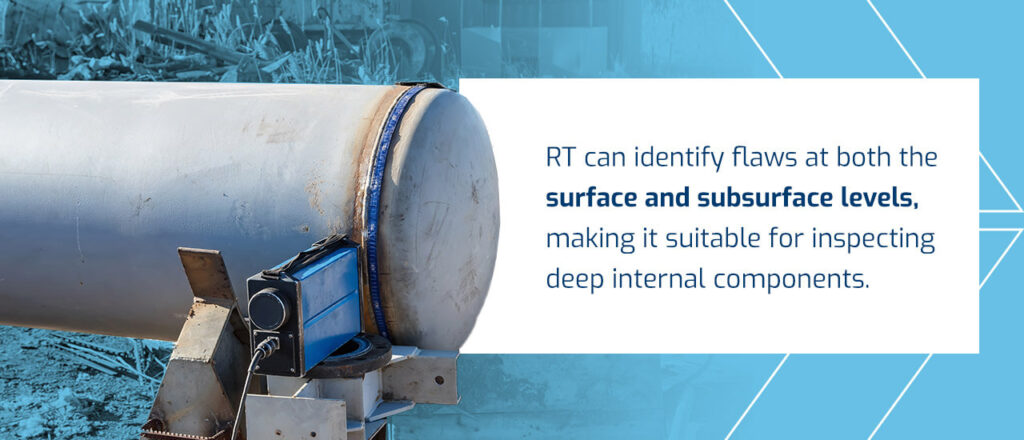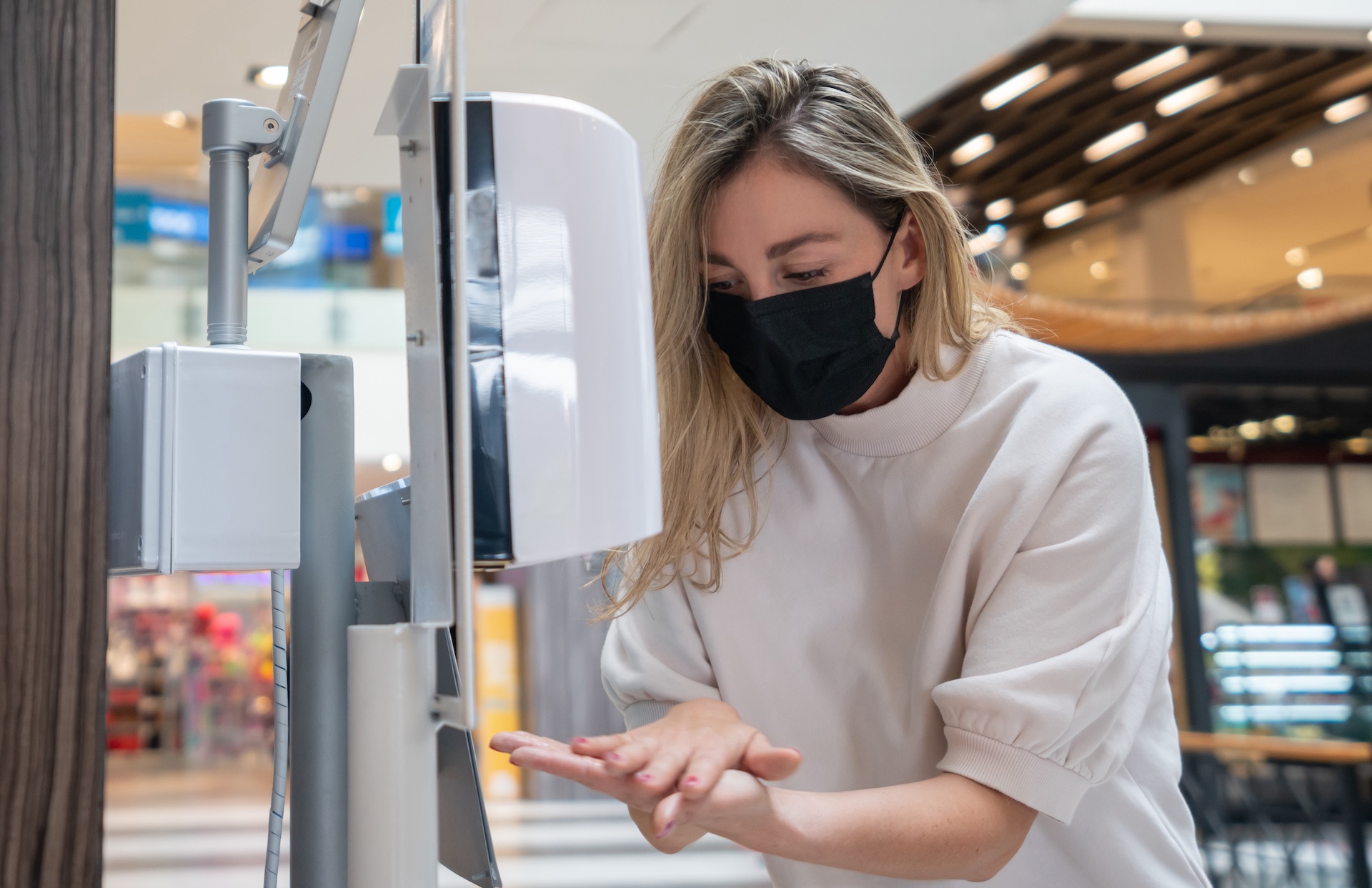Whether you need to verify product quality before shipment or inspect your existing equipment for flaws during routine maintenance, non-destructive testing (NDT) is one of the best ways to achieve your goals.
NDT is popular among companies in various highly regulated industries, including aviation, oil and gas, and manufacturing. It’s cost- and resource-efficient and provides high-quality, repeatable results. Understanding the different methods of NDT and how they work can help you decide which technique is best for your operations.
Related Services
Key Concepts and Terminology
NDT is a complex topic with many different components. First, let’s go over some of the most important NDT terms and concepts.
1. Fabrication Inspection
Fabrication inspection is essentially the process of providing oversight into a supplier’s materials and manufacturing processes.
A fabrication inspection management plan is an essential tool for this process that defines all the specifications and standards of your project and company. You’ll use this plan to vet potential suppliers and ensure they meet your company’s quality requirements.
Some of the benefits of fabrication inspection include:
- Shorter lead times: Inspecting components at the source helps identify potential problems early on, saving you valuable time during your own operations. This is becoming increasingly important in industries where “just in time” delivery models are now the standard.
- Greater transparency: Fabrication inspections help you gain greater insight into your supplier’s production processes.
- Improved quality: Fabrication inspections help ensure your supplier produces components according to your desired specifications.
- Cost savings: While adopting artificial intelligence (AI) and Internet of Things (IoT) technologies often involves a high upfront investment, doing so will save you more over time by improving testing efficiency and accuracy.
Conducting fabrication inspections on your suppliers helps provide peace of mind that you’re using the high-quality materials and equipment you need for your project.
2. Non-Destructive Testing
Destructive testing methods like tension testing involve deliberately breaking the test object. Even if it passes inspection, you need to replace the test object. In contrast, NDT procedures test the object’s capabilities without permanently damaging it.
The advantages of using NDT rather than destructive testing include:
- Cost savings: Because NDT keeps the test object intact, you can safely put it into use after completing a successful test. This eliminates the need for costly repairs, minimizes waste and reduces system downtime.
- Safety: In preventive maintenance applications, NDT identifies hazards before they can cause breakdowns or other major problems — which helps you prevent accidents, injuries and environmental damage.
- Accuracy: Non-destructive tests are easier to repeat than destructive tests, which enables you to get more accurate results. You can also combine your results to find trends and relationships in the data that could indicate a problematic pattern.
- Sustainability: Because you don’t need to replace parts after a successful test, NDT is a significantly less wasteful testing option than destructive testing.
It’s also important to examine the drawbacks. Most NDT processes require inspectors to undergo training and certification, which can be a barrier for most small to mid-sized companies. Some NDT techniques can also produce false positives or ambiguous results that require retesting or further inspection.
3. Liquid Penetrant Testing
Also commonly known as dye penetrant testing (DPT), a liquid penetrant test (PT) uses a liquid penetrant dye to inspect non-porous surfaces for cracks and inconsistencies.
While the most common application for this technique is inspecting welds, it’s also useful for testing piping, forgings, castings and more. Here’s how it works:
- Pre-cleaning: The inspector thoroughly cleans the surface of the test object to ensure the dye will spread properly.
- Dye application: The inspector applies the penetrant to the test object by dipping the object into the liquid or by brushing the liquid onto the object’s surface. Some modern penetrants also come in aerosol form.
- Waiting period: The dye is allowed to sit for around five to 30 minutes to thoroughly penetrate the object.
- Cleaning: The inspector cleans any excess penetrant off the test object and wipes the surface down with a clean, lint-free cloth.
- Developer application: After cleaning, the inspector applies the developer — typically a white, powdery solution — to the test object. The inspector waits for around 10 minutes to allow the developer to draw the remaining penetrant out of the crack.
- Assessment: When placed under ultraviolet light, the contrast between the white developer and the brightly colored dye becomes visible. Any spots where the dye is visible are evidence of an imperfection.
The main limitation of PT is that you can only use it to examine surface-level flaws on non-porous surfaces. You also need to take the time to clean those surfaces before testing — this testing method relies on the ability of the liquid to adhere to a surface, so it’s possible that the penetrant could stick to any debris and skew the test.
Additionally, the chemicals used may produce fumes that are both flammable and hazardous to human health. If you lack access to a well-ventilated space, you may need to either use another testing method or enlist the services of a reliable NDT firm like TRC Companies.
4. Magnetic Particle Testing
A magnetic particle test (MT) involves running a magnetic current through your test object to discover cracks or discontinuities. It usually follows these steps:
- Magnetization: The inspector applies a magnetic flux to the test object. If the current hits a discontinuity, the magnetic field “leaks” and spreads out from that point.
- Particles: The inspector places magnetic particles over the object’s surface. These particles can either be in powder form or suspended in liquid.
- Results: The particles are attracted to the magnetic leakage and collect in that area, making the discontinuity visible to the inspector.
- Retest: Because the first test only picks up cracks that are perpendicular to the magnetic current’s flow, the inspector repeats the test in the other direction. This second examination will pick up any discontinuities running parallel to the current.
MT is a quick, straightforward NDT method, which is why it’s one of the most popular techniques among inspectors. The most important advantages of MT include:
- Cost-effective: The necessary equipment for a magnetic particle test is relatively inexpensive, especially when compared to other NDT methods. Additionally, minimal training is required for technicians to successfully conduct MT processes.
- Portable: A portable electromagnetic yoke allows you to test objects in various environments, including outdoors on your job site. If you’d prefer to test smaller objects in a more controlled environment, you can use a stationary horizontal system instead.
- Fast: In addition to producing immediate results, MT saves valuable time by eliminating the need to deep-clean your object’s surface before testing. Although you will need to clean the magnetic particles off your object after completion, this is a quick step.
You can only use MT to test ferromagnetic materials like steel or nickel, which is this technique’s main drawback. If you’re working with non-magnetic metal, you’ll have to use another testing method.
Another limitation of MT is that it can only detect shallow defects. Flaws deep beneath the surface are unlikely to trigger the magnetic reaction that would make them visible to inspectors.
5. Ultrasonic Testing
Ultrasonic testing (UT) is one of the most powerful NDT techniques you can use for a wide variety of materials and objects. In an ultrasonic test, the inspector applies short ultrasound pulses at frequencies between 1-15 megahertz, though the specific frequency may vary depending on the project’s requirements. One of the most common applications for UT is determining the thickness of an object, such as gauging the severity of corrosion buildup in oil and gas pipelines.
UT’s biggest advantages include:
- High sensitivity: UT enables you to detect small flaws deep below the object’s surface, making it ideal for projects requiring high levels of precision and accuracy.
- Accessible: Unlike other NDT techniques, you can use UT to test an object even if you only have access to one side of it.
- Low-risk: The sound waves produced in UT are not hazardous to nearby machinery, materials or personnel.
- Efficient: UT produces immediate results, enabling quick decision-making. In some cases, the testing process can also be automated for greater efficiency.
Of course, the technique also comes with several drawbacks:
- Personnel: UT requires experienced, qualified technicians — and the training to obtain and maintain those qualifications often adds to your overall costs.
- False positives: Tolerable defects in your object can sometimes produce false positive results, which may require you to repeat the procedure.
- Object shape: Although it is possible to test irregularly shaped objects using UT techniques, it’s significantly more challenging.
6. Radiographic Testing
Radiographic testing (RT) is a type of NDT that uses radiographic imaging to examine the test object’s internal stability. The radiation used can take one of two forms — X-rays or gamma rays — depending on the test object and the project requirements.
Here are some of the biggest benefits of RT:
- Fast: While conventional RT involves time-consuming darkroom processes, advances in digital imaging technology can produce results in just a few minutes. There’s also minimal surface preparation required, so you can simply place the imaging plates where you need them and get started.
- Deep penetration: RT can identify flaws at both the surface and subsurface levels, making it suitable for inspecting deep internal components. It also makes RT a good fit for objects that have already been assembled.
The biggest drawbacks to RT for most companies include:
- Radiation hazard: If personnel do not follow the required safety measures, the radiation used in RT can be hazardous to people — especially gamma rays, which can pass through the human body and cause serious internal damage.
- Cost: Good radiography equipment can cost tens of thousands of dollars. Training your staff to use the equipment safely can also be expensive, which is one of the biggest limiting factors for most companies.
- Limited accessibility: You need unobstructed access to both sides of an object to produce a good test image. If your test object is attached to an existing system, it can be difficult to avoid downtime.
Importance and Applications of Fabrication Inspection and NDT
See how some of the most important industries use fabrication inspection and NDT processes below.
Safety and Quality Assurance
NDT is incredibly important in quality assurance and control processes, as it allows you to demonstrate that your products comply with key safety and industry regulations without requiring you to destroy any items.
To fully comply with these regulations, all involved NDT personnel should be qualified. Some helpful standards governing NDT processes include:
- ISO 9712:2021: This document is the most recent NDT certification standard from the International Organization for Standardization. The certification is mandatory in the European Union but is optional in the United States.
- ASNT 9712: U.S.-based organizations looking to achieve NDT certification in compliance with ISO 9712:2021 can participate in this program offered by the American Society for Nondestructive Testing (ASNT).
- ASTM: The American Society for Testing and Materials (ASTM) offers several different NDT regulations to ensure safe, effective testing practices in various industries.
At TRC Companies, our team of NDT professionals is highly qualified and knowledgeable — you can count on us to tackle any project in almost any industry.
Industries and Fields Using Fabrication Inspection and NDT
Many industries use NDT techniques as part of their everyday operations:
- Construction: NDT is an important part of the quality assurance and control processes for new construction projects, as it helps teams prove that their finished structure is safe for use. It’s also commonly used to detect structural issues in existing buildings.
- Power generation: Energy companies use NDT techniques to ensure the safety and integrity of equipment like boilers, pipework, pressure vessels and heat exchangers.
- Manufacturing: Many manufacturing plants use a combination of techniques to verify the quality of their products and perform maintenance on their production equipment.
- Aerospace and aviation: Because they are subject to stringent government and industry regulations, aerospace and aviation companies use a variety of NDT techniques as part of their manufacturing and preventive maintenance procedures. For example, commercial airlines will often use RT to identify signs of aircraft fatigue in their fleet.
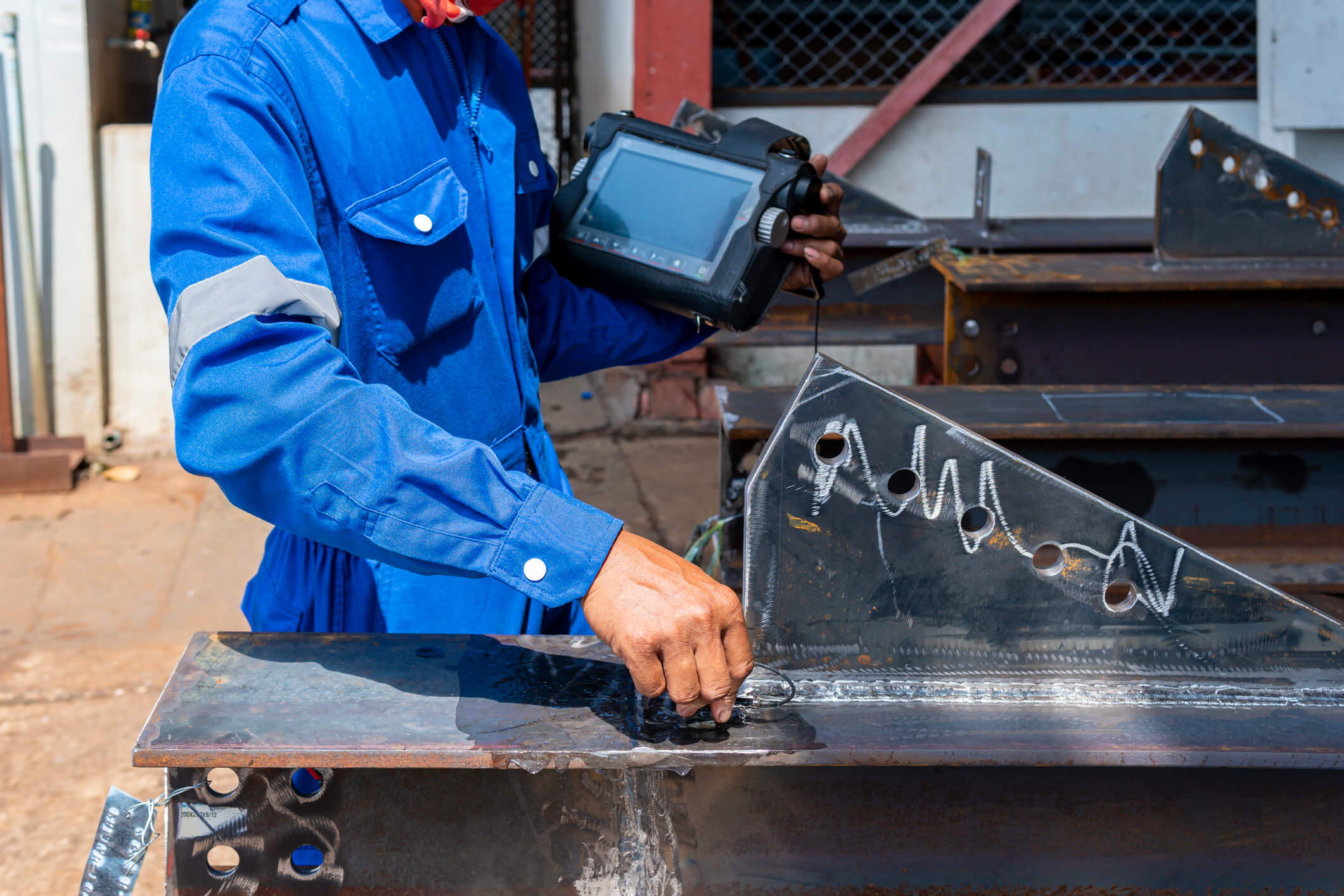
Comparing and Selecting NDT Techniques: Factors to Consider
Will your chosen technique help you achieve your project goals? Keep the following factors in mind when selecting which testing method to use:
- Material and component characteristics: Each method works best with specific materials and test objects. For example, MT can only test ferromagnetic materials, and UT is more difficult with oddly shaped objects.
- Time and cost considerations: How quickly do you need results, and what is your testing budget? Generally, PT is the most cost-effective method you can use in terms of both time and money — but it’s limited in its capacity to detect subsurface flaws.
- Accessibility and object size: For example, while RT requires you to have direct access to both sides of your test object, you only need one open side for UT.
- Sensitivity requirements: Using highly sensitive techniques like UT or MT can help you identify smaller defects in your test object. However, other methods are suitable for applications that do not require this level of sensitivity.
Weighing the Pros and Cons
As discussed previously, each testing method comes with its own advantages and disadvantages. Your team should carefully weigh out these pros and cons to determine whether your chosen technique works with your project specifications and constraints.
Discussing your needs with NDT industry experts can help you make sure you’re on the right track. The highly qualified experts at TRC Companies will consult directly with your team to determine the best NDT techniques for your project.
NDT in Action: Case Studies and Real-Life Examples
Here are a few recent examples of NDT projects we’ve worked on.
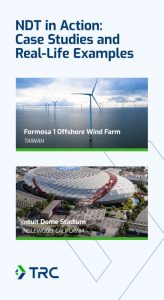
Intuit Dome Stadium: Inglewood, California
Located adjacent to SoFi Stadium and Hollywood Park, the Intuit Dome is a marvel of stadium architecture and design. The 915,000 square foot arena features a multipurpose entertainment plaza including community basketball courts, concert stages and public gathering spaces — and the roof over it all consists of fitted steel beams.
We supplied a team of fabrication inspection and NDT professionals to supplement the client’s China-based manufacturing team as they produced the beams. Before shipping the components to the U.S., our team performed several non-destructive tests, including UT, MT and PT, to ensure the steel beams were stable and safe for use.
Formosa 1 Offshore Wind Farm: Taiwan
Environmental protection is one of our chief missions at TRC Companies, and we got to fulfill that mission when our fabrication inspection team worked on Formosa 1, Taiwan’s first offshore wind farm. The project is located off the coast of Miaoli County.
Because our client manufactured their components overseas, our team provided some additional oversight for the fabrication and quality assurance of the wind turbine components:
- Monopile foundations
- Monopile transition pieces
- Other foundational pieces
Since its initial installation, the wind farm has received various environmental awards, including Renewable Energy Deal of the Year.
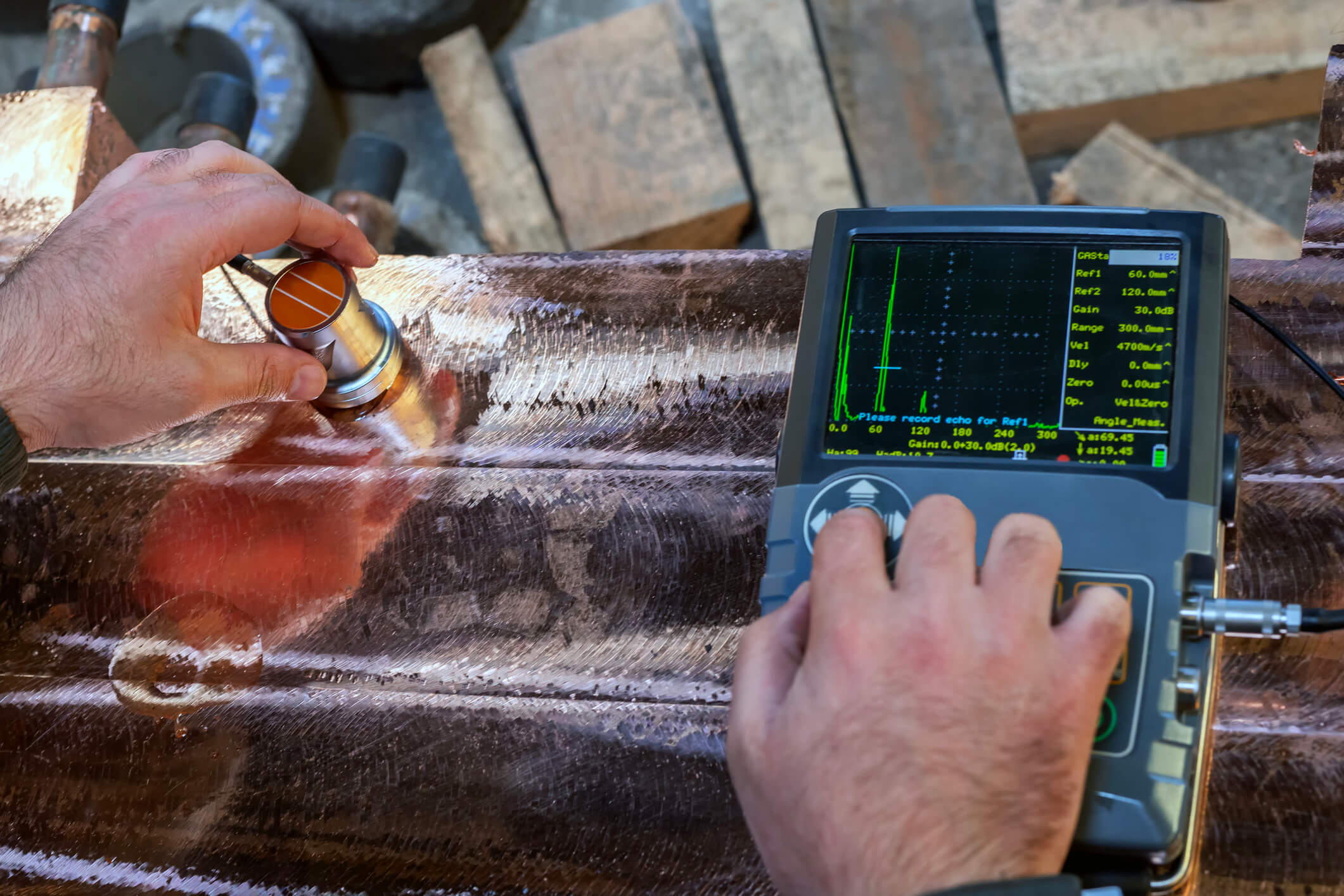
Future Developments and Innovations
We live in an exciting age of innovation. New technologies are constantly emerging to improve processes in every industry, from computing to NDT. Experts predict that developing technologies like AI and IoT will radically transform the NDT industry over the next few years.
Here are a few ways these technologies could enhance key NDT processes:
- Automated image analysis: AI algorithms can automatically identify test objects and create templates for inspection. Some advanced algorithms can also catch defects that are imperceptible to human eyes, improving testing accuracy.
- Continuous data collection: Inspectors can use IoT sensors to collect data over longer periods of time than they would be able to manually. AI can then compile and organize that data along with other relevant project information, saving valuable time that would otherwise have been spent searching for documents.
- Predictive maintenance: AI can analyze historical NDT data to determine when a machine or component is likely to break down, which can help you reduce or prevent downtime. Additionally, an AI algorithm can identify areas in the system that need extra attention during routine maintenance procedures.
While these technologies are still in the early phases of development, it’s clear the NDT landscape will change dramatically over the coming decade.
Consult With TRC Companies Today
As a leader in delivering top-tier professional services, TRC Companies can help you find the right NDT solution for your project. We have decades of experience working with companies in a wide range of industries, including real estate, transportation, government and power generation.
Ready to get started? Contact us to learn more about our NDT and fabrication inspection services.

Embrace The Shift
Partner With TRC’s Tested Practitioners




